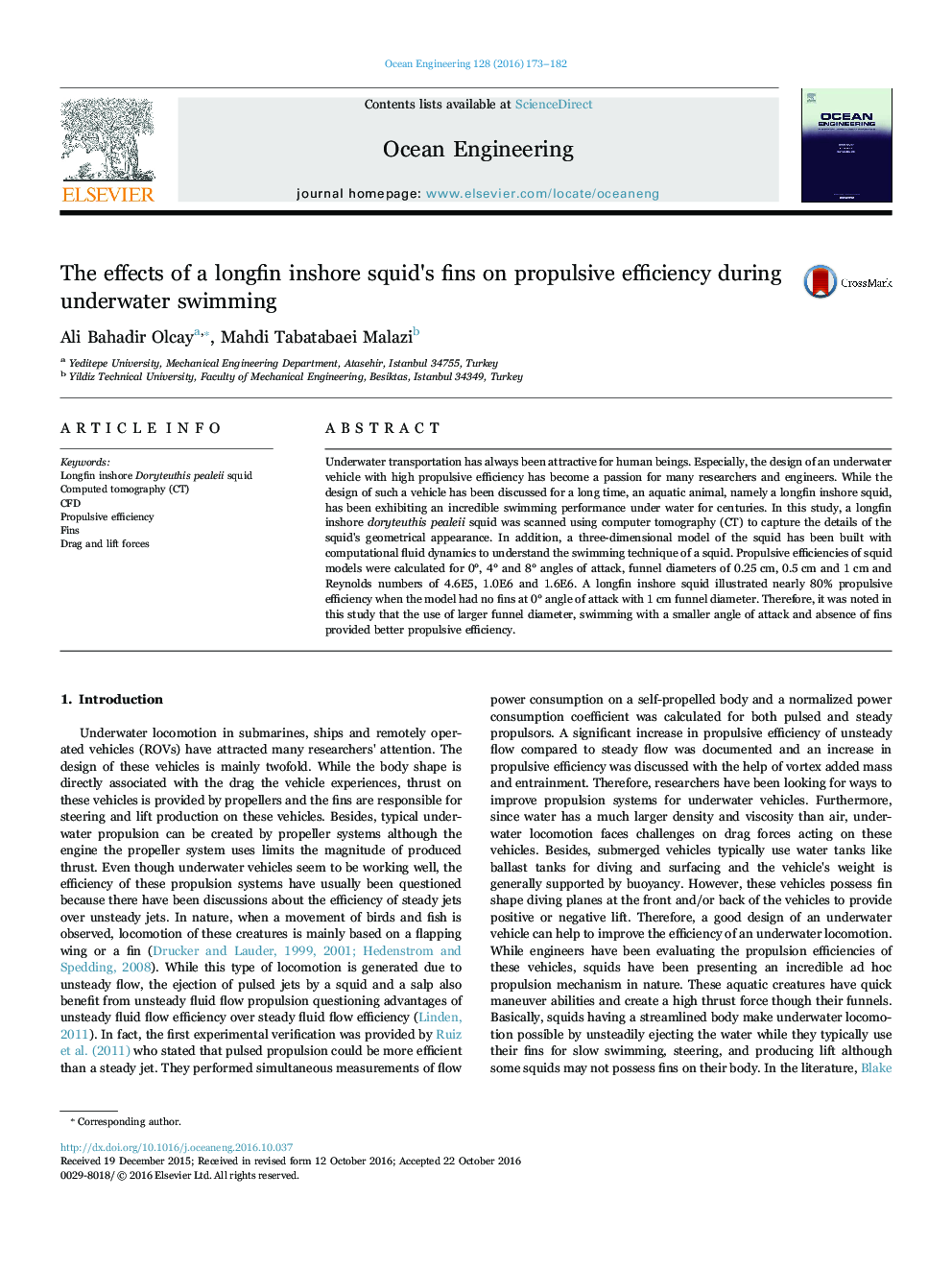| Article ID | Journal | Published Year | Pages | File Type |
|---|---|---|---|---|
| 5474735 | Ocean Engineering | 2016 | 10 Pages |
Abstract
Underwater transportation has always been attractive for human beings. Especially, the design of an underwater vehicle with high propulsive efficiency has become a passion for many researchers and engineers. While the design of such a vehicle has been discussed for a long time, an aquatic animal, namely a longfin inshore squid, has been exhibiting an incredible swimming performance under water for centuries. In this study, a longfin inshore doryteuthis pealeii squid was scanned using computer tomography (CT) to capture the details of the squid's geometrical appearance. In addition, a three-dimensional model of the squid has been built with computational fluid dynamics to understand the swimming technique of a squid. Propulsive efficiencies of squid models were calculated for 0°, 4° and 8° angles of attack, funnel diameters of 0.25 cm, 0.5 cm and 1 cm and Reynolds numbers of 4.6E5, 1.0E6 and 1.6E6. A longfin inshore squid illustrated nearly 80% propulsive efficiency when the model had no fins at 0° angle of attack with 1 cm funnel diameter. Therefore, it was noted in this study that the use of larger funnel diameter, swimming with a smaller angle of attack and absence of fins provided better propulsive efficiency.
Related Topics
Physical Sciences and Engineering
Engineering
Ocean Engineering
Authors
Ali Bahadir Olcay, Mahdi Tabatabaei Malazi,
